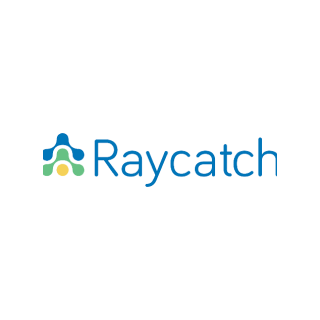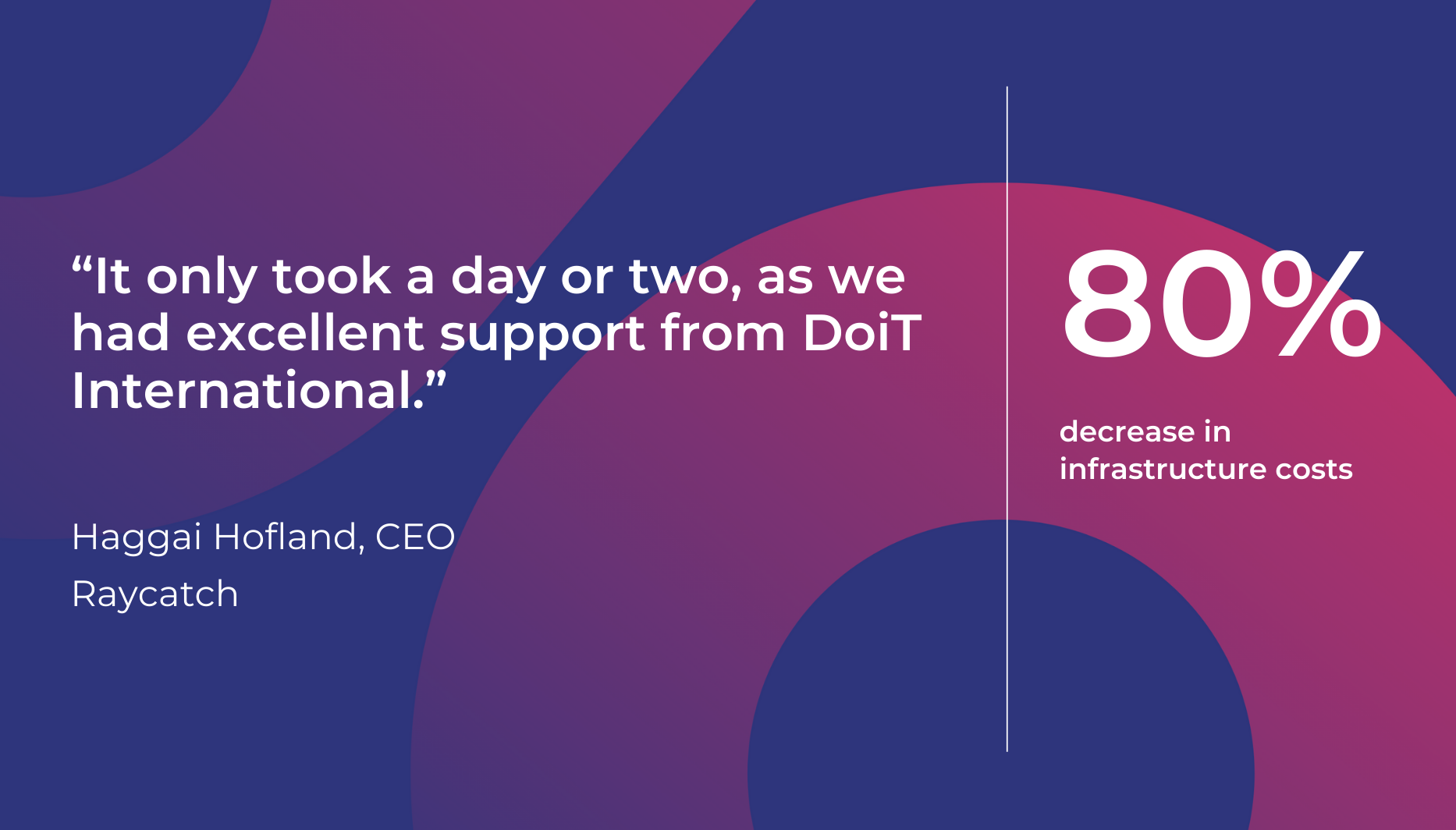How Felix Pago used DoiT Cloud Intelligence™ to reduce cloud waste and scale responsibly
Felix Pago used DoiT Cloud Intelligence™ to cut Firestore costs by 70% and align engineering with real-time, intent-aware cloud financial insights at scale.
Meet the team leading DoiT
Hear what’s new at DoiT
Unlock revenue through expert partnerships
Discover career opportunities
Award-winning partners of cloud providers


To offer companies data insights into how to optimize the functioning of their solar assets, Tel Aviv-based Raycatch developed the DeepSolar™ software to provide owners with a means of improving the ROI of installed solar photovoltaic plants.
Founded in 2015, the company now works with some of the largest utility companies in Europe, including Arava Power, RTR, EDF, and Enlight, and is now starting to work in China, India, and other expanding markets.
“We’re one of the first companies that has been able to make use of the huge amount of data generated by solar assets,” explains Haggai Hofland, CEO at Raycatch. “We don’t install any new hardware, we just tap into the already existing data streams and analyze that data to determine what the owner needs to do. Thanks to the sophistication of our algorithms, we’re able to decipher the indicators from all the data ‘noise’ and provide our clients with concrete daily action items.”
In order to power the data harvesting and analysis it needs to complete every 24 hours, Raycatch built a container-based system using Docker and Google Kubernetes Engine. But after encountering performance issues, it looked to switch from its previous provider in order to make its infrastructure more robust, and to lower costs. Google Cloud provided the answers.
“Our system is complex, as all the solar asset data needs to be collected, then normalized before analysis,” explains Haggai. “We were early adopters of Kubernetes and we needed a platform that would support a containerized infrastructure, and would help us to scale up as we grow.”
Raycatch implemented Google Compute Engine and Google Cloud Bigtable to power its daily solar asset data analyses, reducing processing times and improving performance while reducing costs by 80%.
For tech start-ups, building an infrastructure that doesn’t require a large upfront investment, and that is stable but flexible enough to respond to changing needs, is crucial to successful company growth. With its previous cloud provider, Raycatch encountered performance issues that were leading to system downtimes. “Docker was poorly supported, so often disks weren’t able to disconnect and on one occasion, a disk in the data center even had to be rebooted manually,” recalls Haggai.
To improve system performance, Raycatch decided to migrate its infrastructure to Google Cloud. “As everything was Dockerized, we could just lift and shift, and it was very quick and easy,” says Haggai. “It only took a day or two, as we had excellent support from Google Cloud Partner DoiT International. They examined our existing architecture and helped us to anticipate any obstacles and challenges, which meant the move was more or less frictionless.”
“Now, we use Compute Engine to handle our processing,” Haggai explains. “We have peaks during the night, as that’s when we run our scraping and analysis, in order to have the refreshed reports ready for our clients in the morning. We use Cloud Load Balancing and autoscaling to seamlessly handle those peaks in demand.”
“The big change for us is the degree of flexibility we now have with Google Compute Engine, it’s easy to spin up clusters of different-sized VMs, or custom machine types, depending on our needs,” says Haggai. “We have also made modifications to the way we organize our architecture like shifting to in-memory processing, for example, which helps to reduce computing costs.”
Raycatch uses artificial intelligence to perform some of its data processing tasks, in order to achieve the system efficiency required to perform the necessary analyses within the daily timeframe.
“We use Cloud Bigtable as a NoSQL database to store incoming information from the solar assets, and to help us perform sophisticated calculations,” says Haggai. “A solar asset might have 10,000 sensors for humidity, temperature, and so on, and each sensor needs to be tagged and identified. We have automated this process in order to make it faster and more accurate—I’m sure anyone working with IoT can relate to this problem.”
Raycatch had set a target to remove its previous limitations on the amount of data it was able to process, and with Cloud Bigtable, discovered that it was able to meet this target. “We used Bigtable to store the results of our Phase 1 algorithm, and also relied on it for faster data fetch in Phase 2,” Haggai says. “Our algorithms use a huge amount of data so previously we were limited by this, but Bigtable has given us an answer to the problem.”
Moving to Google Cloud has enabled Raycatch to improve its performance while lowering its infrastructure spending. “The system is more stable and more flexible, but also faster,” says Haggai. “Since moving to Google Compute Engine and rearranging our infrastructure, the number of work hours required to oversee a simple analysis is 60 times lower than before, enabling our IT team to focus on optimizations instead. What used to take us three days to analyze, now takes less than five hours. That means, within a 24-hour period, we can get more done and offer more complete reports to our clients.”
“And because we’ve changed to in-memory disks, we actually use fewer VMs and have lowered our spending, while getting the same results in terms of our productivity,” Haggai continues. “We’ve been able to lower the infrastructure costs by at least 80 percent, compared to our previous provider.”
Now, Raycatch is looking to continue its use of AI approaches to further automate its system and expand its client base.
“Thanks to Google Cloud, our complicated processes are no longer a bottleneck. Our AI can run on all of our data, parallelizing analyses efforts, so we’re able to take on more clients and projects,” says Haggai. “We can be agile and expand in smart ways, adapting as we grow. That’s had a really positive impact on the way we develop our services and products.”
Felix Pago used DoiT Cloud Intelligence™ to cut Firestore costs by 70% and align engineering with real-time, intent-aware cloud financial insights at scale.

Growing the reservation platform for the world’s Michelin restaurants with DoiT’s expertise. CoverManager, the go-to reservation and booking platform for the world’s foremost restaurants, partners with DoiT to control costs and maintain high server stability

How Opterrix partnered with DoiT to deliver near-instant hailstorm analysis and cut feature delivery times by half.
From cost optimization to cloud migration, machine learning and CloudOps,
we’re here to make the public cloud easy.
From cost optimization to cloud migration, machine learning and CloudOps, we’re here to make the public cloud easy.
Ready to get started?
You will receive a calendar invite to the email address provided below for a 15-minute call with one of our team members to discuss your needs.